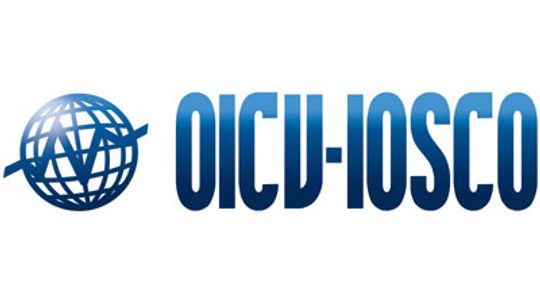The rise of hybrid funds
By Devarshi Saksena; Charles Vermeylen; Thomas Pointer, Simmons & Simmons
Published: 20 November 2023
Recently, the different categories into which an alternative investment fund fell (hedge, private equity, infrastructure etc.) have become less distinct and a new fund type – the hybrid fund – has emerged.
These offer greater flexibility in terms of, for example:
- The subscription and redemption terms and fees charged;
- Their suitability for investing in less liquid assets (e.g., private credit or distressed debt); and
- The wide range of strategies they can be used for.
By taking advantage of this flexibility, managers can launch hybrid funds which offer a ‘best of both worlds’ option, tapping into less liquid (but hopefully higher yielding) assets than most traditional hedge funds, while offering greater liquidity and better redemption rights than a traditional closed-end fund.
Hybrid funds, though, are not, in themselves, a panacea - the key is to ensure that the fund is established to reflect the underlying investment strategy to be employed and is suitable to meet the ultimate requirements of the investors.
In this article we provide a high-level look at the pros and cons of such funds, their key characteristics and the questions a manager needs to ask in order to select the appropriate structure.
What is a hybrid fund?
There’s no single definition of what a hybrid fund is but, for this article, we’re using the generally accepted view, i.e., a private investment vehicle that combines one or more elements of an open-ended fund structure with one or more attributes of a closed-end fund structure.
Hybrid funds offer investors the possibility of access to less liquid investments with (hopefully) higher returns while providing managers with the opportunity to develop a broader investment base than traditional open-ended funds (along with a more flexible structure).
Investors can withdraw or to add capital at set intervals (unlike in a typical closed-end fund) – being able to tailor the fund’s liquidity profile to the liquidity of the underlying investments makes a hybrid fund a more attractive proposition for sophisticated investors.
Main characteristics of hybrid funds
Liquidity
Although hybrid funds are bespoke structures, with differing investment goals and fund structures, they often share certain key characteristics, including:
Allowing longer-term investors to redeem existing investments (or add capital during the life of a fund) albeit on bespoke terms – such redemptions are usually on specified dates set at regular intervals or on the occurrence of certain, specified events.
As this entails the manager aligning lock-up periods with the fund’s anticipated liquidity profile, relevant terms should be included in the fund’s offering documents.
Alternatively, a hybrid fund could be structured to give investors a choice of liquidity options, allowing investors to select the one best suited to their investment goals.
Hybrid fund managers also have at their disposal a variety of liquidity management tools (e.g., redemption gates, lock up periods, side pockets, suspension) to ensure the fund suffers no significant liquidity mismatch. This can help avoid fire sales of the funds most liquid assets or excessive borrowing.
Valuation
A fund which permits ongoing subscriptions and redemptions must be able to determine its Net Asset Value (NAV) as at the permitted subscription and redemption dates.
Since a hybrid fund will likely hold illiquid and/or hard-to-value assets, for which market quotations may not be available, determining the NAV is a key challenge which must be addressed.
So, too, is agreeing the terms on which new capital invested in the fund will be accepted – for this, one of two alternatives will normally be used:
- The ‘private fund model’ allows periodic new investment in tranches, with investors in the same tranche participating in future investments on a pro rata basis and without exposure to earlier investments;
- The ‘hedge fund model’ allows investors to subscribe based on the fund’s then current NAV (provided that this can be accurately determined on an ongoing basis).
Illiquid assets are typically valued at the lower of (i) cost and (ii) current value.
Fees
Hybrid funds allow a degree of flexibility over how to structure management and performance fees, with models based on either (i) the incentive fee (typically with a high water mark) seen in open-ended funds or (ii) carried interest, common in closed-ended funds. Variants or combinations of each model can also be used.
The most appropriate fee model will depend on the circumstances of the individual fund - generally, deferred incentive compensation structures will be more common when restrictions on investors’ rights to withdraw their capital are stricter.
Additional capital contributions
Unlike traditional closed-end funds, hybrid funds can allow investors to make capital contributions (in full, drawn down over time from a committed amount or a mixture of the two) on an ongoing basis, outside the usual fundraising period.
Traditional closed-end funds can face an issue where the fund’s portfolio value decreases significantly between initial and final closings, which is unattractive for investors having to buy in at cost. Hybrid funds, though, can avoid this by adopting a more typical hedge fund structure, which reflects the fund’s underlying portfolio’s fair market value as at the date of any later closings on which new capital contributions are accepted.
Tax considerations for hybrid funds
Structuring a hybrid fund gives rise to additional tax considerations compared to a typical open-ended hedge fund structure, including:
- Whether the fund’s investment objective and approach will be treated as investing and not trading for tax purposes – if they are, meeting the conditions of the investment manager exemption (and equivalent exemptions outside the UK) may be less of a requirement;
- The potential to make use of carried interest arrangements, in place of more typical hedge fund incentive fees;
- Additional downstream structuring (including the development of a below-the-fund holding structure) will be needed to maximise returns from underlying assets;
- Ensuring that the hybrid fund structure enables investors to achieve a post-tax outcome equivalent to what would have been received had they invested directly in the underlying assets.
Some pros of hybrid funds
Flexibility
Combining characteristics of both open- and closed-ended structures can give a hybrid fund a number of advantages over the traditional ‘hedge’ or ‘private’ fund model, including significant flexibility in how the fund is structured. This allows the manager to tailor terms to specific investment goals and time horizons.
Being able to invest in illiquid assets while, at the same time, providing for appropriate liquidity terms means that hybrid funds are well-placed to meet the needs of a wider investor base, for whom access to capital is important. This means they can, to some degree, square the circle of providing exposure to the potentially higher yield that alternative strategies offer while, at the same time, offering stable cash flows and more predictable liquidity.
Moreover, the ability to accept additional capital contributions through the fund’s life allows the fund to be marketed on an extended basis rather than (as is more usual with closed-end funds) there being periods between closings when new capital cannot be raised.
Diversity
By combining elements from multiple investment vehicles, hybrid funds can invest in a more diverse range of asset classes than would be typical for a hedge fund (or even a private equity fund). This helps increase the opportunity to generate higher investor returns or to smooth cashflows.
Hybrid funds can, for example, offer exposure to (among other things) private equity, distressed debt, venture capital, private debt/credit, infrastructure, derivatives, real estate and public securities.
Liquidity management
Since they can be structured with greater liquidity management, hybrid funds can offer a happy medium when it comes to the holding of assets:
Closed-end funds can be left holding assets when the fund’s life comes to an end, which can mean the establishment of a costly continuation fund;
Open-ended funds can face liquidity mismatch problems, which can lead to fire sales, the imposition of a gate or the suspension of redemptions.
Because of their increased flexibility on liquidity, ability to raise additional capital etc., hybrid funds are better placed to avoid such issues.
And some cons
There are, of course, also downsides to setting up a hybrid fund rather than a more traditional hedge or private fund.
These can include:
- Operational and valuation aspects of a hybrid fund can be relatively complex, for example, matching cash flows from subscriptions and redemptions with the underlying cash flows from investments;
- Being more complex, hybrid funds can face greater regulatory and compliance issues;
- Being highly bespoke, establishment and running costs can be greater than for more “plain vanilla” structures;
- Any secondary liquidity may remain somewhat illusory (for instance, in a listed fund scenario where shares are trading at a discount to NAV); and
- The manner in which managers are paid by hybrid funds may complicate how those managers then pay their own staff.






